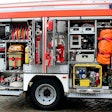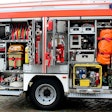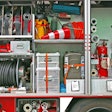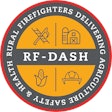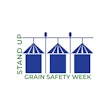
The GEAPS Exchange 2025 featured a crucial education session on barge safety, shedding light on best practices for loading grain barges. April Sloan, plant manager at Cargill, delivered key insights into practical safety measures and equipment considerations that are reshaping the industry's approach to barge loading operations.
Practical safety tips for grain barge loading
Sloan emphasized the importance of comprehensive safety protocols, stating, "We want our team members, ourselves, our friends, family, loved ones to go home safe every day, and barge loading is a high-risk activity at our sites." She outlined several critical safety practices:
- Personal Protective Equipment (PPE): Standardize PFD types and implement cold weather gear when temperatures drop below 40°F.
- Emergency response preparedness: Ensure easy access to first aid kits, AEDs, and emergency response ladders.
- Communication protocols: Establish clear communication between barge loaders and deck hands.
- Regular training and recertification: Conduct thorough initial training and annual recertification programs.
- Ergonomic practices: Train workers on proper techniques for carrying loads and walking on barges.
- Inspection routines: Implement pre-shift and regular equipment inspections.
- Emergency drills: Conduct annual drills simulating various emergency scenarios.
"Communication is so critical between the barge loader and the deck hand. It's really the tight crew and they're the eyes for each other while they're on the barge," Sloan noted, highlighting the importance of teamwork in safety practices.
Equipment considerations for safe barge loading
Sloan discussed several equipment innovations that have significantly improved safety:
- Fall protection systems: Transition to systems rated for both straight drop and side loads.
- Closed loop haul systems: Implement systems under constant tension for improved accuracy and safety.
- Engineered ropes: Use ropes rated for specific river conditions at each loading site.
- Barge access equipment: Install working barges, gangways, and multi-tiered access points.
- Draft reading technology: Utilize barge tender systems with lightweight sensors for real-time feedback.
- Alarm systems: Implement visual and audible alarms for haul system movements.
"We've seen great success with this [closed loop haul] system in place," Sloan remarked, emphasizing the safety improvements and operational efficiency gains.
The session underscored the grain handling industry's commitment to continuous improvement in safety practices. Sloan concluded by encouraging industry collaboration: "If you're not roped into a local or regional or national group on barge safety and you have interest, definitely there's people in this room that I recommend reaching out to to get some additional information."
.jpg?auto=format%2Ccompress&crop=faces&fit=crop&h=48&q=70&w=48)







